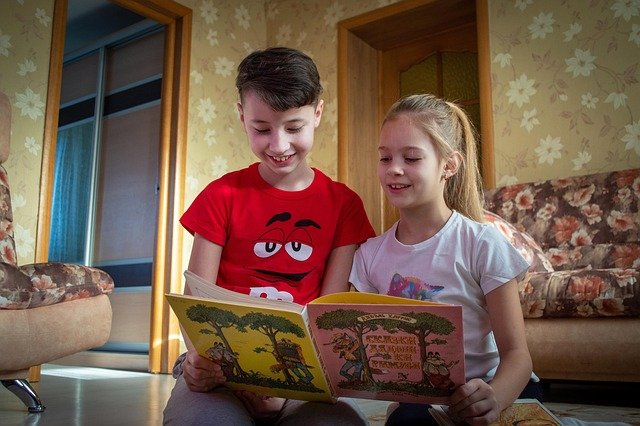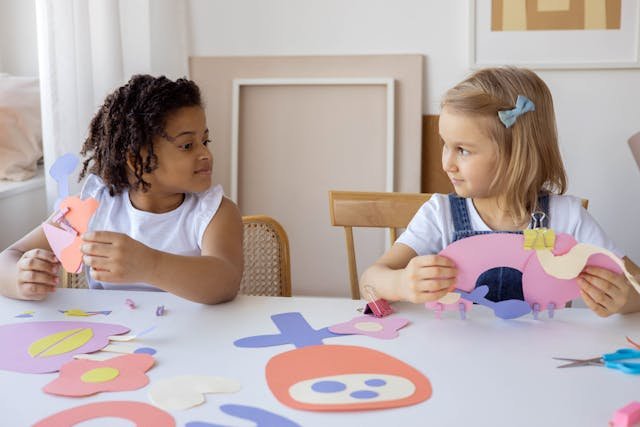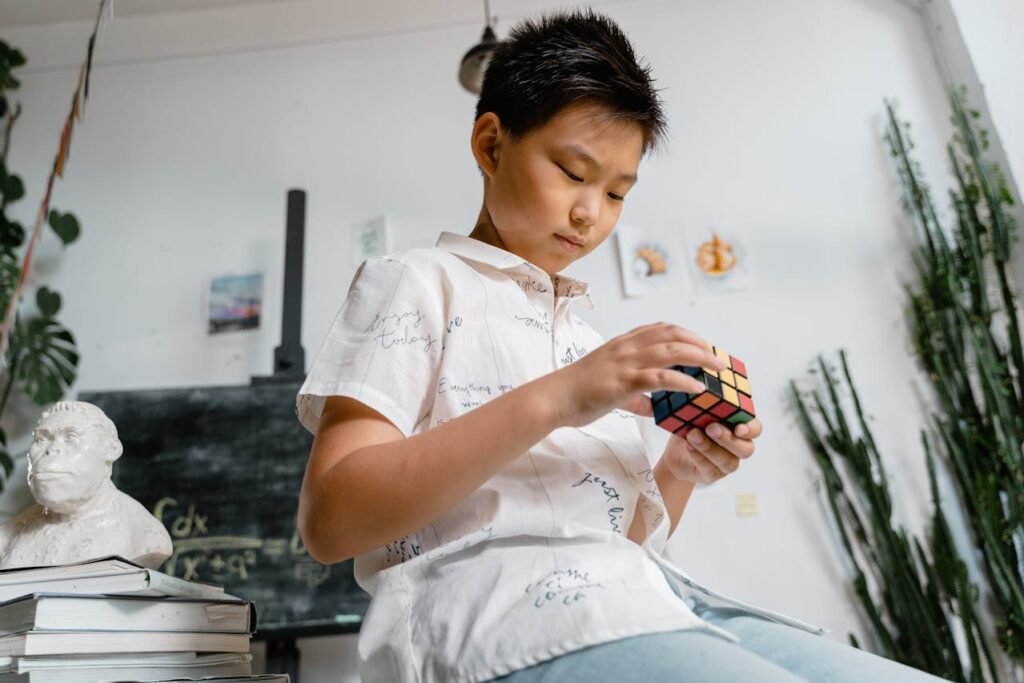For generations, people have debated whether boys and girls learn differently. Some say boys are better at math, while girls are stronger in reading. Others believe boys are more logical and girls more emotional. These ideas are repeated so often that many parents begin to wonder if they are true.
But here’s the truth: most of what we hear about boys’ and girls’ brains comes from myths, not science. Yes, there are differences between children — but those differences are often smaller than we think. And many of them have more to do with environment, upbringing, and opportunity than with biology.
Understanding the real story matters. When parents and teachers believe in myths, they may treat children differently without even realizing it. This can shape how children see themselves and what they believe they can achieve. On the other hand, when we base our ideas on science, we can support every child — boy or girl — to reach their full potential.
Common Myths About Boys’ and Girls’ Learning Abilities

Many of the ideas people believe about boys and girls come from old traditions rather than science. These myths have been repeated for so long that they can feel like facts. But when we look closer, they don’t hold up.
Myth 1: Boys Are Naturally Better at Math and Science
This is one of the most common beliefs — that boys are wired for logic, numbers, and problem-solving, while girls are not. Parents sometimes even expect their sons to excel in math and their daughters to prefer reading or art.
Science tells a different story. When researchers test boys and girls in math skills at young ages, the results are nearly the same. Differences usually appear later, often because of environment. If girls hear again and again that math “isn’t for them,” they may lose confidence and avoid it. Boys, encouraged to keep trying, often push through challenges. The gap comes not from ability, but from expectation.
Myth 2: Girls Are Naturally Better at Reading and Language
Another common claim is that girls are born with stronger language skills. While some studies show girls may begin talking a little earlier, the difference is very small. By the time children enter school, boys and girls can both become strong readers and speakers if given the same support.
What often makes the difference is practice. Girls are more likely to be praised for reading quietly or writing stories, while boys are sometimes pushed toward sports or physical play. This shapes habits, which over time can make it look like one group is “better” than the other.
Myth 3: Boys Are More Logical, Girls More Emotional
This stereotype goes beyond academics. People often describe boys as rational problem-solvers and girls as sensitive or emotional. In truth, all children experience deep emotions, and all children can learn to think logically.
Science shows that emotional expression is shaped by culture. Boys are often told to “be tough” and hide feelings, while girls are encouraged to share them. This doesn’t mean boys have fewer emotions — only that they are taught to show them differently.
Myth 4: Boys and Girls Have Completely Different Brains
One of the strongest myths is that male and female brains are built so differently that they explain learning gaps. In reality, brain scans show far more similarities than differences. Both boys and girls have brains capable of learning every subject. The small differences that do exist are not enough to determine intelligence or skill.
What truly shapes learning patterns is practice, opportunity, and encouragement. Children who believe they can succeed — and who are supported by parents and teachers — grow stronger, no matter their gender.
Why These Myths Persist
So why do these myths continue if science proves them wrong? The answer lies in tradition, culture, and bias. For centuries, boys were encouraged to pursue careers in science, math, and leadership, while girls were directed toward art, language, and caregiving. Even as society changes, these old ideas linger in subtle ways.
When a teacher praises boys for being “clever” in math but girls for being “hardworking,” children absorb the message. When toys are sold as “for boys” or “for girls,” children begin to believe their abilities depend on gender.
But science — and classrooms like those at Debsie — show that ability comes from practice, curiosity, and persistence, not gender.
What Science Really Says About Boys’ and Girls’ Brains

When scientists study children’s brains, they find something very important: boys and girls are far more alike than different. The brain is incredibly flexible, and learning is shaped more by experience and environment than by gender.
Small Differences, Not Big Divides
Some studies show small differences between boys and girls in brain development. For example, certain areas linked to language may mature a little earlier in girls, while areas linked to spatial awareness may develop a bit earlier in boys. But these differences are small — and they overlap. Many boys develop language skills early, and many girls excel in spatial tasks like puzzles and building.
The key lesson is this: individual differences are much greater than gender differences. One child may naturally love numbers, while another may thrive in storytelling — and this has little to do with being a boy or a girl.
The Power of Neuroplasticity
One of the most important discoveries in modern science is neuroplasticity — the brain’s ability to change and grow through practice. This means that no skill is fixed. A child who struggles in math can improve with support. A child who finds reading difficult can grow stronger with practice.
Gender does not limit neuroplasticity. Both boys and girls can rewire their brains through effort. When given the same opportunities, they show similar progress across all subjects.
The Role of Hormones and Biology
Some people argue that hormones like testosterone and estrogen create big differences in thinking. While hormones do play roles in mood and energy, research shows they don’t determine intelligence or learning ability. For example, testosterone may influence risk-taking, but risk-taking itself can be shaped by culture and parenting.
In other words, biology provides a base, but environment and experience have the bigger impact on cognitive growth.
Similarities Are Stronger Than Differences
When scientists compare brain scans of boys and girls, they find far more similarities than differences. Both use the same brain networks for memory, problem-solving, attention, and creativity. Both respond to encouragement and practice in the same way.
What often looks like a “gender difference” in school performance is usually an expectation difference. Boys may be told they are “naturally better” at math, while girls may hear they are “naturally better” at reading. Over time, children internalize these messages and begin to act as if they are true — even though their brains are capable of learning both equally well.
At Debsie, we see proof of this every day. A boy in coding class might become a wonderful storyteller through creative writing. A girl in biology may fall in love with physics. What matters is not gender but exposure, encouragement, and the belief that effort leads to growth.
How Environment and Culture Shape Learning Patterns

If boys and girls are born with brains that are more similar than different, then why do we see gaps in school performance between them? The answer lies not in biology, but in environment and culture. Children grow up in worlds filled with subtle messages about what they “should” be good at, and these messages shape their confidence, choices, and learning patterns.
Expectations at Home
Parents often send signals without realizing it. A father might encourage his son to build with Lego while offering his daughter a storybook. A mother might compliment her daughter’s neat handwriting but praise her son’s clever problem-solving.
These small differences in encouragement can add up. Over time, children begin to see themselves the way adults describe them. A girl may think, “I’m better at reading,” while a boy may believe, “Math is my strength.” Yet both might have had the same potential if given equal exposure to each activity.
Classroom Culture
Teachers also play a powerful role. Studies have shown that teachers sometimes call on boys more often in math or science discussions and praise girls more for neatness and cooperation. This doesn’t mean teachers are intentionally unfair — it often happens unconsciously.
But children notice. When a boy is praised for solving a math problem quickly, he may feel encouraged to take more risks. When a girl is praised for neat work but not bold answers, she may become cautious, even if she knows the solution.
At Debsie, we train our teachers to look for these patterns. We make sure every child, regardless of gender, gets equal opportunities to answer questions, take risks, and show creativity.
Society and Media
Culture and media also shape beliefs about learning. Cartoons, books, and advertisements often portray boys as adventurers or inventors and girls as caretakers or helpers. These repeated images influence children’s ideas of what is “normal” for their gender.
For example, when children see mostly male scientists in movies or female nurses in stories, they may start to believe these careers are limited by gender. This affects their motivation in school. A girl who loves physics might hesitate to pursue it, while a boy who enjoys storytelling might feel embarrassed.
Peer Influence
Children also shape each other’s beliefs. A boy may avoid reading aloud if his friends tease him for liking stories. A girl may pretend she dislikes math if her peers say it’s “too hard for girls.” These pressures can be strong, especially in later school years.
The good news is that peer culture can also be positive. When children are in environments where everyone is encouraged to try everything, stereotypes lose their power. That’s why inclusive classrooms — like those at Debsie — are so important.
Why Environment Matters More Than Gender
Science shows that the opportunities children receive and the encouragement they hear matter far more than whether they are boys or girls. When given equal chances, children perform similarly in every subject.
This means parents and teachers have tremendous power. By creating supportive, balanced environments, we can open doors for every child — not just the ones who fit traditional stereotypes.
How Parents and Teachers Can Break the Myths

Once we understand that most differences between boys and girls come from culture, not biology, we can begin to change the way we guide children. Parents and teachers have the power to open doors instead of closing them, to encourage possibility instead of limitation.
Encouraging Curiosity in Every Subject
Children should feel free to explore every subject, regardless of gender. If a boy shows interest in poetry, celebrate it. If a girl wants to experiment with robotics, support it. The more we allow children to explore without labels, the more confident they become in their abilities.
At Debsie, we make sure no subject is “for boys” or “for girls.” Every child gets the same chance to fall in love with math, science, literature, history, or coding.
Changing the Language We Use
Words are powerful. When we say, “Girls are so neat” or “Boys are so clever,” we may not realize we are reinforcing stereotypes. Instead, we can praise effort, persistence, and creativity. Saying things like, “I like how you kept trying different ways to solve that problem” encourages growth for all children.
This shift in language tells children that ability is not fixed — it grows with effort, regardless of gender.
Creating Equal Opportunities
At home, give boys and girls the same kinds of toys, books, and activities. Encourage both to cook, build, read, and solve puzzles. In classrooms, give equal turns in answering questions, leading groups, and presenting ideas.
Equal opportunity doesn’t just build fairness — it builds skill. A boy who practices reading aloud often improves quickly, and a girl who gets more chances in math develops confidence she might not otherwise gain.
Modeling Equality Through Adults
Children learn as much from watching adults as from being taught directly. If they see only men fixing things and only women caring for others, they may begin to believe that’s the rule. Parents and teachers can break this pattern by modeling balance.
Show children that both men and women can read, calculate, invent, nurture, and lead. These examples shape how children see their own possibilities.
Building Confidence Through Support
Some children hesitate not because of ability, but because they fear judgment. Boys may fear being teased for showing emotions. Girls may fear being wrong in front of others. Creating a safe, supportive space helps them take risks without shame.
At Debsie, we celebrate mistakes as learning opportunities. This simple shift helps both boys and girls feel safe to try, fail, and grow — which is the real foundation of confidence.
A Shared Path to Growth
When parents and teachers treat boys and girls as equally capable learners, children stop limiting themselves. They discover that they can try anything, learn anything, and grow in any subject. This belief, reinforced daily, shapes stronger, more resilient learners.
The Long-Term Impact of Myths vs. Science

The beliefs children grow up with don’t just affect their school years — they shape their futures. When myths guide expectations, children carry limiting beliefs into adolescence and adulthood. But when parents and teachers use science and encouragement, those same children can break barriers and achieve far more than anyone predicted.
When Myths Take Hold
If a girl grows up hearing that math “isn’t for girls,” she may stop trying, even if she has natural talent. By high school, she may avoid advanced math classes, closing doors to careers in science, technology, or engineering.
If a boy grows up hearing that reading “isn’t for boys,” he may avoid books, even if he enjoys stories. This can affect not only his academic success but also his ability to express himself clearly in later life.
These myths don’t reflect true ability. They reflect lost opportunities created by belief.
The Cost of Unequal Encouragement
When encouragement is uneven, children begin to doubt themselves. Girls may feel pressure to be perfect, avoiding risk in subjects where they could grow. Boys may feel pressure to hide emotions, struggling to ask for help when they need it.
Over time, these patterns create gaps — not because one gender is more capable than the other, but because one group was given more room to explore and fail without judgment.
Breaking Myths Opens Doors
When myths are replaced with science-based support, the results are powerful. Girls who are encouraged to take risks in math often rise to the top of their class. Boys who are supported in reading often discover a love for language. Both groups expand their possibilities — in school, in careers, and in life.
Encouragement also builds resilience. When children know that ability grows with effort, they are less likely to give up in the face of challenges. They carry this belief into high school, college, and beyond, giving them an advantage in a world that rewards persistence and adaptability.
A Brighter Future for All
Imagine a world where every child, regardless of gender, is told: “You can learn this. You can grow.” In that world, we would see more girls leading in technology, more boys excelling in the arts, and more children embracing subjects they once thought were “not for them.”
At Debsie, we already see glimpses of this. In our global classrooms, children from all backgrounds show that when myths are removed, talent shines in every direction. A boy can love literature and physics. A girl can thrive in coding and history. Every child can surprise themselves with what they are capable of.
How Debsie Breaks Myths and Builds Equal Opportunities

At Debsie, we believe that learning should never be limited by gender. Every child deserves the chance to explore every subject, to make mistakes, and to grow with confidence. That’s why our platform is designed to challenge myths, celebrate curiosity, and give equal opportunities to both boys and girls.
Teaching That Focuses on Effort, Not Labels
In our classrooms, we don’t say, “Boys are good at math” or “Girls are better at reading.” Instead, we say, “You are improving because you practiced,” or “Look how your persistence paid off.” This shifts the focus from labels to effort, helping children believe their growth is in their hands.
This approach encourages both boys and girls to step into areas they might otherwise avoid. A girl who hesitated in science begins to enjoy experiments. A boy who thought he “wasn’t a reader” starts discovering stories he loves.
Equal Exposure Across All Subjects
At Debsie, every child gets exposure to a wide range of subjects — from physics and coding to literature and art. We make sure no subject feels closed off. Our partner teachers encourage children to test, explore, and ask questions, whether they are working through a math puzzle, writing a story, or learning a new language.
By giving both boys and girls equal space to try everything, we prevent stereotypes from limiting potential.
A Global Classroom With Diverse Role Models
One powerful way to break myths is by showing children diverse examples. At Debsie, our teachers come from different backgrounds, cultures, and experiences. Children see both men and women teaching math, coding, science, art, and history.
This diversity sends a simple but powerful message: knowledge is for everyone. Seeing a woman teaching physics or a man teaching literature shows children that subjects are not tied to gender — they are open to all.
Building Confidence Through Safe Learning Spaces
Many children hold back because they fear making mistakes. At Debsie, we create classrooms where mistakes are welcomed as part of growth. Teachers gently guide students to reflect and try again, building resilience in the process.
When children feel safe to fail, they feel free to try. And when they try, they often discover strengths they didn’t know they had.
Supporting Parents Along the Journey
Breaking myths doesn’t stop in the classroom. Parents play a key role in reinforcing equality at home. That’s why Debsie works with parents too, offering guidance and updates to help them encourage curiosity and persistence across all subjects.
Together, teachers and parents create a balanced environment where every child — boy or girl — can grow without limits.
Conclusion: Beyond Myths, Toward True Potential
For generations, people have believed that boys and girls learn in fundamentally different ways. But science tells us something far more powerful: the differences are small, and the similarities are great. What truly shapes a child’s learning is not gender but opportunity, encouragement, and mindset.
Myths may seem harmless, but they close doors. They whisper to girls that math isn’t for them, or to boys that reading is a weakness. Over time, these whispers become limits children carry into school, work, and even their sense of identity. Yet when we replace myths with truth, the story changes. Children begin to see that effort matters more than labels, and that every subject is open to them.
At Debsie, we see this change every day. We teach boys who discover they love storytelling. We teach girls who fall in love with coding and science. What they all share is not gendered ability, but the courage to try — and the support to grow.
As parents and educators, we have the power to shape this future. We can choose to celebrate curiosity over stereotypes, persistence over perfection, and growth over limits. When we do, we give children the gift of possibility.
👉 Book a free trial class with Debsie today and see how we nurture equal opportunities for every learner.
👉 Explore our courses — from physics and biology to reading, history, and coding — and discover how we unlock every child’s potential.
Because when we look beyond myths, we see the truth: every child’s brain is built to learn, to grow, and to shine. And with the right support, they will.
Read Next:



